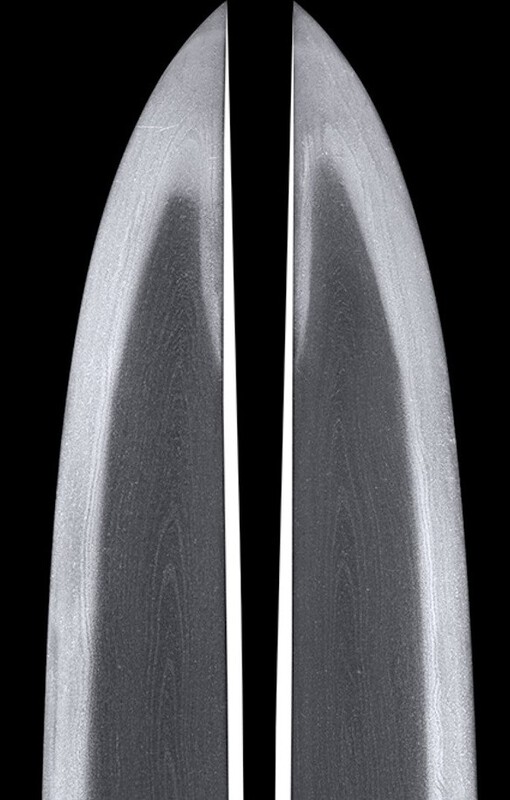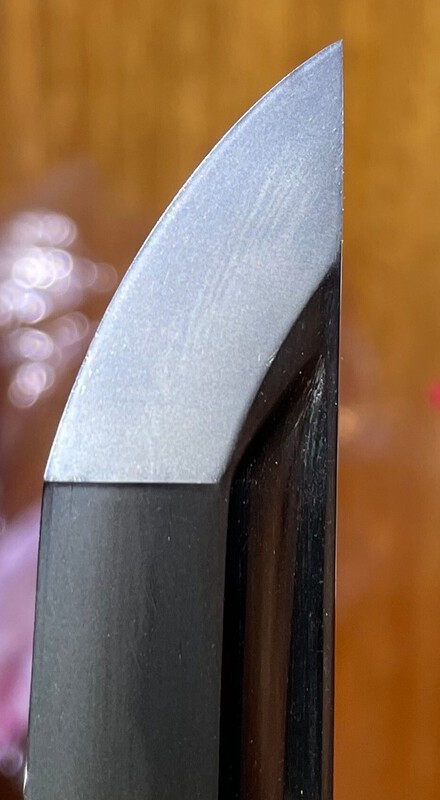Leaderboard
Popular Content
Showing content with the highest reputation on 12/26/2024 in all areas
-
9 points
-
This is room 2 of 3. Mostly storage for swords but a Saotome armor and a lot of Tetsubin and books. I'm doing an exhibition now at the North Carolina Museum of art ( the making of a warrior ) from Oct 19 2025 to Feb 2 2025. You can see images on line. A lot is missing because it's there. The curator picked what she wanted so skipped over many of the Kamakura jidai swords.9 points
-
8 points
-
6 points
-
There have been so many good posts it is great to read this thread. NBTHK mumei attributions are bit problematic as as Glen said above they use specific groups etc. It is the same for swords and in my personal opinion they should not be taken as 100% only truth especially for lower end items. There are just thousands and thousands of unremarkable mumei items swords/fittings etc. and they will need to give some attribution for the item. It is just common Japanese style that they will make quite specific mumei attributions be it for swords or fittings. Identifying a mumei sword as a work of specific smith is just how Japanese appreciation seems to be in some cases. And for more unremarkable items you will get broad group attributions. Best works go to top tier smiths and lower works to lower tier. I am focused on old swords so I am not that up to date on tsuba schools. However you fitting guys know much better. My question would be how many plausible categories (in current traditional tsuba appreciation) there even are for mumei Late Muromachi - Early Edo tsuba, 20-50-100+ possible categories? Then there are possibly hundreds of thousands of mumei tsuba that are fitting to that time frame, and need to be classified in some way. I think Glens example with 12 tsuba is a perfect example of that. For me personally having a mumei attribution to X doesn't really give too much exciting information of the tsuba in question. Having the tsuba theme explained is much more interesting to me than majority of the "bulk" attributions.4 points
-
4 points
-
3 points
-
Curran, I've always liked that theme EDIT: Those are very nice pieces. thanks for sharing! Here's a few Ohno as per your request, plus a couple that have been called Kanayama, owari, etc as well as Ohno... gear (tokei) theme: sunrise (hi no de) theme: Bamboo (take) theme: Riceball, head bag (kubi tsunagi), etc. theme (I don't know if the board member that purchased this still has it, but if he wants to comment on whether the NB thought this was a Ohno, please do...) This one Is a head scratcher. I've seen extremely similar (in terms of both theme and workmanship) binned as Ohno, Owari, and Kanayama. Make of it what you will: And finally, this was labeled as being an Ohno by the seller, but the general consensus is that it should be binned as an owari tsuba, so... Best, rkg (Richard George)3 points
-
Armor would be sengoku to late Edo Swords/pole arms are Kamakura to shinshinto Teppo are Edo Tsuba are mostly late Muromachi to Edo3 points
-
Very interesting read and detailed coverage of development, history and people. I lived through a lot of this in Australia at the end of the 1980's and through the 1990's. A worthwhile post Peter. Mal3 points
-
G'day Guys, One of the reasons why I am fascinated with the Gassan smiths, is that they are the complete package. Not only are they excellent swordsmiths, but they also carve beautiful horimono, make their own habaki and from time to time make their own tsuba. AOIJapan recently had a magnificent example of this by Gassan Sadakazu. The sturdy blade which is forged in masame, is dated 1866 and has beautiful Fudo Myo horimono. The original koshirae includes a tsuba signed by Sadakazu. A similar tsuba is shown in the "Gassan Sadaichi Kaiko Ten" book. Cheers, Bryce3 points
-
Seconded, thirded, fouthed, fifthed... As a collector with for the most part no interest in martial arts as a practice I found this a more than excellent read. Thank you Peter for bringing us to the 'practice' side of collecting, BaZZa.3 points
-
3 points
-
3 points
-
When I first started collecting WW2 Japanese swords, the best advice I was given was to get some good books on the subject! They paid for themselves many times over! I could identify the various models, learn some great information, have great pictorial evidence, and saved a lot of time and money not buying fakes. So in case Brian has a litter of kittens over this post, it is really a community service announcement, for newbies starting out, or seasoned collectors who found it hard to pay the original prices for these books. So as to share some books that helped me along, I would like to help others along. Check the current prices on the internet from commercial sellers, you will be floored. The prices are without postage because I need the destination. Prices in Australian dollars. DAWSON....... AUD420 FULLER & GREGORY....AUD290 KISHIDA (Yasukuni)... AUD120 KAPP.... AUD80. They are in great condition, and some lucky buyers may get an additional "gift with purchase" from my library. So Brian, I probably am breaking the rules posting this here, but I want the military collectors to take up the offers.2 points
-
My guess is 於肥後下地 / 橋本一至 (花押) Hashimoto Isshi is quite famous maker and guys focused on fittings can most likely offer more assistance.2 points
-
I personally stick to the principle of having a fewer number of good quality pieces compared to a large number of low quality ones. Unless you handle good pieces it is very difficult to develop a real feel for quality. On this forum you will find a good deal of them and experienced people willing to guide you in the process. Be prepared to make mistakes, I did as my junkbox box reminds me too often... Regards Luca2 points
-
Dear Petro. Welcome to NMB! You have posted this in the military swords section which is primarily for those with an interest in swords carried by the Japanese armed forces after the Meiji restoration, your sword appears to be from before that period so posting it in the Nihonto section might get you better responses. We are not going to be able to tell you very much from these images, at first glance it appears to be a Shinto katana, a sword whose blade is longer than 60cms made after about 1600 but before 1860, which is unsigned or mumei. A clear photo of the whole blade without any fittings, one of the nakago and one of the kissaki or tip would be helpful, along with some measurements. Better pictures of the fittings would also help. All the best.2 points
-
I spotted years ago that there is a music group called TSUBA - I have not heard any of their music but they have had several albums. [I think it is "Techno - dance music" not for my generation ] https://soundcloud.c...tsuba/popular-tracks Who knows it might be something to listen to in the background while you sort your collection out Tsuba obidome https://www.jauce.com/auction/s11662692342 points
-
2 points
-
Nope. Jim G. offered me his Water Wheel a long time ago, and I had to decline at the time. I regretted it for many years. Got the chance to fix it later, and jumped on the ones above. Left one is a bit bigger and thicker than the right one. Knotty tekkotsu and wet [yakkite] type patina on both. I think the smaller one on the right is the one that is a bit more tekkotsu gnarly. Ono is treated as a dumping bin by the NBTHK, thus you see some boring pieces and some great pieces with the same NBTHK attribution. I thought I had my One-n-Done [Tokugawa mon] Ono tsuba, but I couldn't resist these last year after a decade or more regretting not buying Jim Gilbert's. No idea to whom he sold his Ono.2 points
-
Greetings Trice, As with everything, AI is bound to make mistakes and unsubstantiated claims, as in this case, the kanji given in the screenshots does not correlate to the given image, nor the first translation.2 points
-
2 points
-
I’d consider buying it, but I have big concerns. Is it all just your comments, minus the dissenting opinions and viewpoints discussed here? If any of those opinions are included, are those people credited? Will you be donating any of the book proceeds to the forum where you collaborated the information published? Never seen anything like this before on the forum, so forgive me if I find it suspicious. -Sam2 points
-
2 points
-
For me books is just fitting as I can't afford swords. Just purchased bunch at Yahoo JP, and waiting for few more auctions, definately an addiction & obsession of mine.2 points
-
1 point
-
1 point
-
1 point
-
Wow, lovely mini museum Gary! Indeed this is beyond most would call merely a collection. What is your approach - sengoku period to early Edo?1 point
-
That's what I meant, thx for those hints. Thx, I'm gonna do that. I'm reading different threads in this forum already, and I think you mean Dan. I understand both of you. The whole thing depends on the time and money someone is able and willing to spend. That's the same thing with watches. I'm into watches for a long time. Some are collecting cheaper watches and like to have many of them. Some like to collect more expensive ones. Some change the watch they're wearing twice a day, some wear their watch for half a year. Some need many watches, some are happy to have one good watch. What's good enough? That differs from person to person. I like to have fewer watches with a decent quality. Through the years I found out what I need to have in a watch and now I'm actually a one watch guy, though I have more than one, but I don't change my watch since I got my last one. I'm totally new in the world of tsuba and I'm willing to learn, but my time and my money is limited. I've already realized it's possible to look through all the different auctions sites for hours... My thoughts on this, and on the watch topic is, and on all other topics by the way, everyone is different and has different preferences, different possibilities. I'm against gate keeping of all kinds. I respect the guy who likes to collect Chinese watches and the one who likes to collect a.lange. I don't have to understand why, as long as someone is having fun , it's fine. Actually it's the same with quality of watches. Someone who's new won't see a difference between a 200 and a 5000 Dollar watch. You need hints what to look for and the experience of handling different watches in person to realize the differences. Edit: I'm already browsing Bonhams and found a lot of 5 tsuba sold for 70k and another one with 4 tsuba sold for 5k. One can see a clear difference between those two lots. Thx for the tip.1 point
-
Recognising quality can really only be achieved by studying a great many pieces. You need to develop an “eye” that will tell you immediately how good something is irrespective of what any signature might suggest. It is not easy to explain. However, the fact that a chunk of inlay has fallen off this one is a good indicator plus the figures are crudely done. Does that hat really look like it’s sitting on the child’s head? Does that face look like a good face? Does the placement of the feet look “right”? Is there any detail in Mt Fuji or has the maker just done the bare minimum? if you want to spend time learning I suggest you go onto Bonhams website, search “tsuba” and click on “past lots”. You will have thousands to look at and the actual sold prices will start to give you an insight. Many are sold in multiple lots so make sure you read the descriptions. Sadly there is no short cut. If you want to be able to identify better quality and then start to collect better quality you have to put the hard work in! If on the other hand you just want to collect “tsuba” based purely on what appeals to you then the road ahead is easier but full of pitfalls and traps!! In my opinion, one really good piece gives more pleasure than a box full of crap items. There is one person on here that will not agree with that last statement……wait for it🙂!1 point
-
Yeah, I get it. But there's that "precedent" thing I need to keep in mind. Otherwise I'm going to get people posting tsuba books in the fittings section, and armour books in the katchu section. Once I allow one, the next guy gets to say "but you allowed....." Sorry, but if the military guys have any sense, they will be checking this section regularly. Btw...excellent books that are a must have.1 point
-
1 point
-
Good start for a beginner, a couple of these pieces you have posted I had been keeping my own eye on, particularly the one of the Tatar noble. As Colin and John have said, the Crane tsuba is the highest quality out of those you have identified in your post. A few general things to try and watch for include quality of base metals, intricacy of linework, and signs of mold casting (often a sign of a later production). As you learn more about different styles/schools of craftmanship you'll get a sense of what is lower and higher quality, what styles you like and what you want to collect.1 point
-
Discussed here: This is a piece together as mentioned above. Not sure what the original koshirae was really. As you can see a piece of ito was added to the handle as well. Meaning the fuchi that is on it is to small. I'm assuming the blade was cut down to fit the tsuka etc.. I would pass. This is being sold in Australia too. I'm pretty sure it is much harder for them to get blades down there so the price will reflect that.1 point
-
The theme of the menuki is referred to as takarazukushi (宝尽くし) lit. abundance of treasures, filled with treasures. It is a theme that is also found on kimono fabrics, and features the lucky items shown on Dale's post above.1 point
-
http://nihonto.us/MOKUME DM141.htm carved woodgrain [mokume] https://galeriasavar...apanese-sword-tsuba/ a "square" version with very close elements. Not uncommon to see the same design on differently shaped tsuba [these two I think are Shoami - as I have a daisho signed Shoami Kanenori with identical carved flower motifs and nunome]1 point
-
Dan, Do me a favour please. Take a confirmed (modern copy is fine) cast tsuba, take a punch, and punch around the nakago ana heavily to deform the metal like many of these you post. Tell us if the metal deforms nicely and changes shape, or if it crumbles and bits fall off.1 point
-
All the tsuba are correct - I presume they are up for auction on the three Japanese platforms? Mercari - Yahoo - or Jauce. I am not sure if they have appeared on ebay but I would not be surprised to see them turn up there if they were listed with a "buy it now price" on the Japanese sites. I won't post the links to the guards - you don't need extra competition in an auction. It is a balancing act posting images of what you may be interested in, between finding out if they are real or tipping other people off to a bargain. But you seem to have a good eye. One of the designs similar to this: you can find other images here https://www.militaria.co.za/nmb/topic/44894-antique-show-kozuka/ PS. Merry Christmas !1 point
-
For the most part, categorizations of unsigned pieces and dates of production are indeed rife with theology Mauro @MauroP. That's abundantly evident once you start gathering multiple papered examples to try to glean some sort of insight into possible kantei points for specific "schools". Well, I was hoping people would actually give the twelve tsuba I posted an honest attempt... with no fear of judgement. But it seems that everyone is either too busy at this point in time of the year (speaking of theology ) or just don't even have an idea where to begin trying to group together such seemingly disparate examples I'll spare you all the angst of trying to figure it out. It turns out ALL twelve of these tsuba were papered as Ko-Shoami, which is a purely fictitious attribution that really gained a foothold with Sasano's publications. It seems to me like the only kantei points the NBTHK is using for this attribution are: -must be unsigned (so there's no way to check) -pre-Edo period or Edo period (it really doesn't seem to matter, even though the "ko" in Ko-shoami is supposed to mean "pre-Edo period") -steel plate (which can be solid or have just about any type of sukashi you can think of) -and most importantly, it must be difficult to place in any of the other limited number of "schools" that have been pronounced and established over the last 100 years. ...so pretty much any steel tsuba that you can't stick into an existing category. It's kind of like the "Island of Misfit Toys" (a seasonal reference for those of you who know it...) Actually, "ko-shoami" is a very handy category to have for an organization that needs to label things for money. It's like a "get out of jail for free" card for those troublesome tsuba1 point
-
1 point
-
Sorry to say it, but I would say it's definitely a later utsushi, and certainly not a piece made by the Nidai smith. It could have been made by any smith in the late Edo period and could even be a post Meiji-era copy. It doesn't look like any of the Futagoyama copies of the late Edo period either... totally different style to theirs. Sadly, it's yet another example of where the NBTHK is giving out attributions for tsuba categories they know little about. Yamakichibei papers from the NBTHK are particularly egregious, and it is one of their weakest areas (although they have multiple weak areas... as discussed in this recent thread https://www.militaria.co.za/nmb/topic/50714-established-ideas-that-need-to-change-3-pre-edo-period-schools-reliance-on-nbthk-papers/). here are the key points to my conclusion (many of which were already pointed out by Steve @Steve Waszak: It doesn't have any of the surface features one would expect (demand?) of a YKB piece that went through their characteristic "yakite" style of heat treatment. This piece is a flat plate that has been chiseled to have the yasuri lines, but has none of the surface texture features of the original. The steel in the copy also has a dull flat grey color rather than the expected variety of dark earthy shades on the real pieces. compared to The hammered back rim is far too even and uniform, and lacks any of the defining characteristics of the rims of the Nidai Yamakichibei smith... his rims always show some purposeful irregularities like these: And in the same view you can see the same rough organic-ness of the hot-punched sukashi lines in the real piece vs what looks like clean-cut or sawn sukashi lines in the copy. compared to There isn't a single other example of engraving on the mimi of a YKB tsuba. It's almost like this was a clear "signal" of being a copy because the maker added on a feature that has clearly never done on any YKB tsuba. Yours is actually the first example of this that I have ever seen that has anything like this at all. Stylistically, it's also completely out of sorts with any of the aesthetics that are exemplified by YKB work... almost opposite in character actually. this is just an instant "no". Another dead give away for me is the linear chisel mark in the "tegane" at the top of the nakago-ana. This is simply not something you see in YKB tsuba. this looks like it was an original feature... therefore also an instant "no"1 point
-
It was me - I am the new owner (at a high price, but the blade, reassuring correspondence (AOI Art has always been top notch to me), and the fact that I may switch out this high end Tsuba - if just a teak as I am a jewelry maker) combined with the age and that stunning polish and vivid jihahda won me over.1 point
-
Dawson (working from memory) mentioned that there was another one of these out there. I've found it on this Russian Origami-token.ru site. Same anchor on the backstrap, no leather cover, and no anchor on the drag. Blade is slightly different, in the shape of the nakago jiri, and the start point of the bohi. Oh, and the rayskin is black on this one vs the white on the one I have. Mine:1 point
-
Well, what can we see in your images? (An image of the whole blade without habaki would help) The blade has obviously been polished many times and is a shadow of its former self. The kasane (thickness) of the nakago is far greater than that of the blade. The hada is not really discernible but we can see a lot of assorted forging flaws and openings. All the above suggests it’s an old blade that was perhaps not of the greatest quality to begin with. This in turn might suggest Koto, maybe late Muromachi….a time when many swords were hastily made. Hopefully others will offer opinions but the problem created by some members who post on here…..their attitude deters others from “having a go”. ..just an opinion……possibly wrong🙂1 point
-
1 point
-
1 point
-
G'day Guys, Here are some shots of a Gassan Sadakazu tanto dated 1867, which is very similar to the 1863 dated Sadayoshi tanto I posted earlier. It has very similar masame hada with the grain completely folded around on itself in the boshi, just like in the Sadayoshi signed example. Does anyone know the term for this? Cheers, Bryce1 point
-
1 point
This leaderboard is set to Johannesburg/GMT+02:00













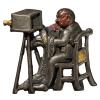


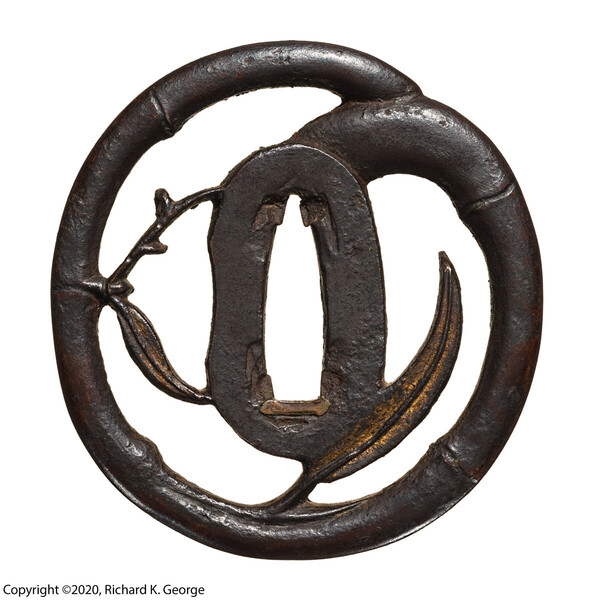



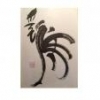






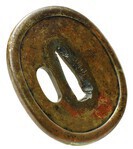


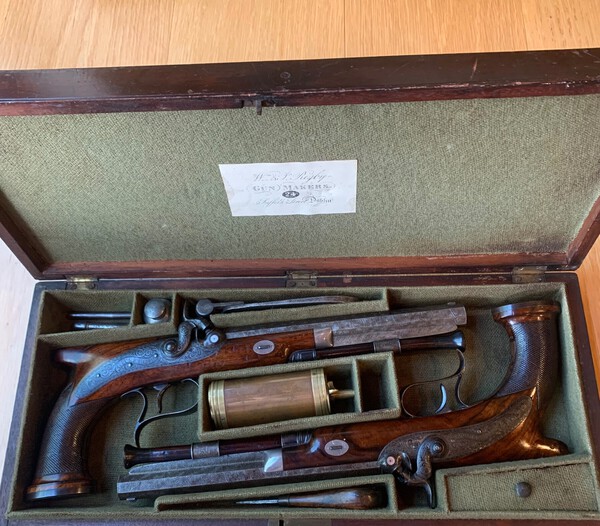
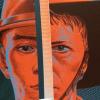



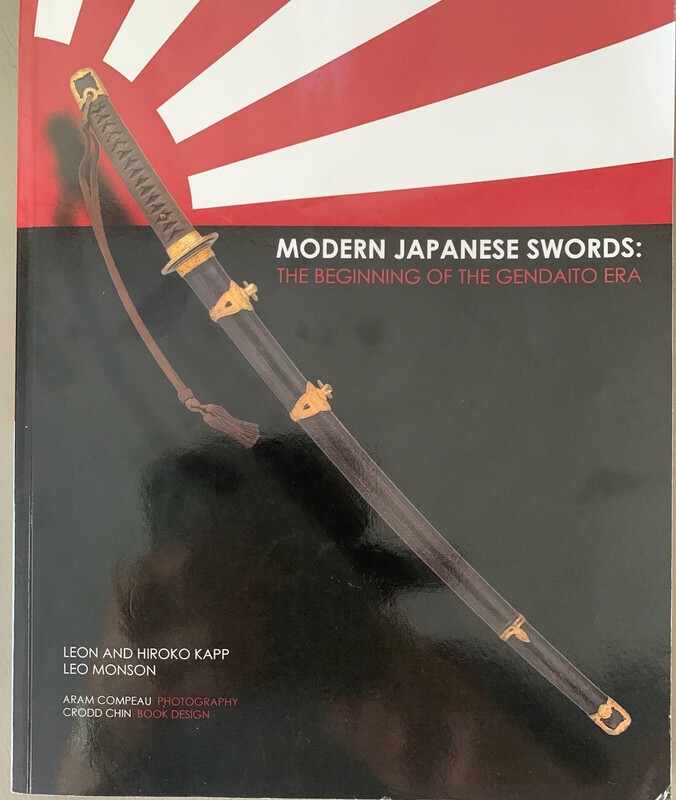
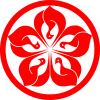


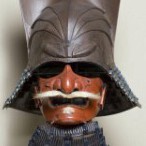
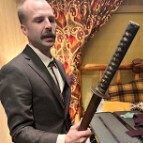
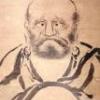




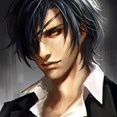
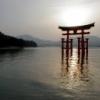
.thumb.jpg.b230d369cb581228bdc2ca90f9259959.jpg)
.thumb.png.4c5df79fec171b2dc4a23af38e280a4d.png)
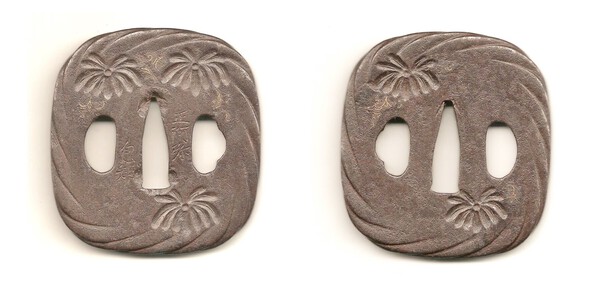


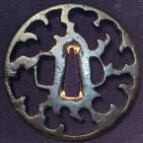
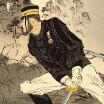
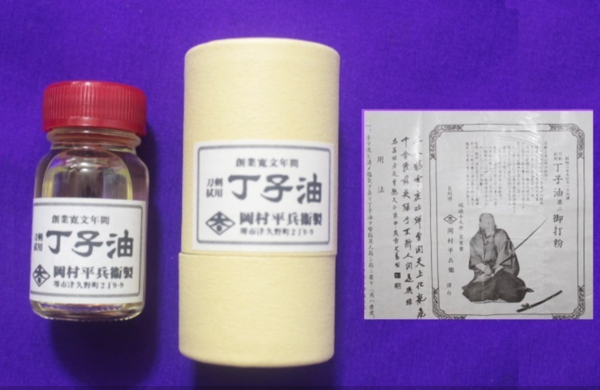








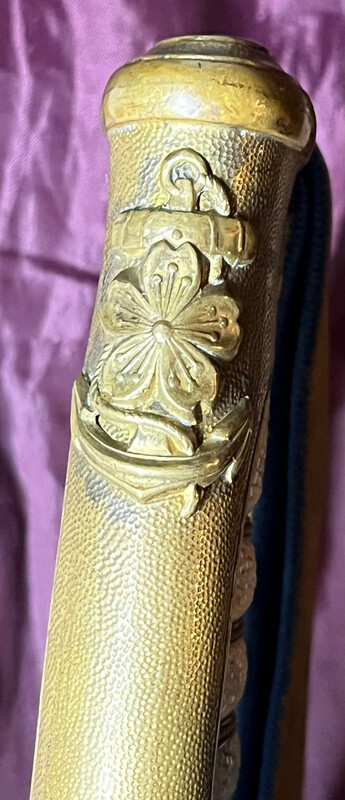




.thumb.jpg.fbb5cb12f6970d1222c738f91c6ee97c.jpg)


